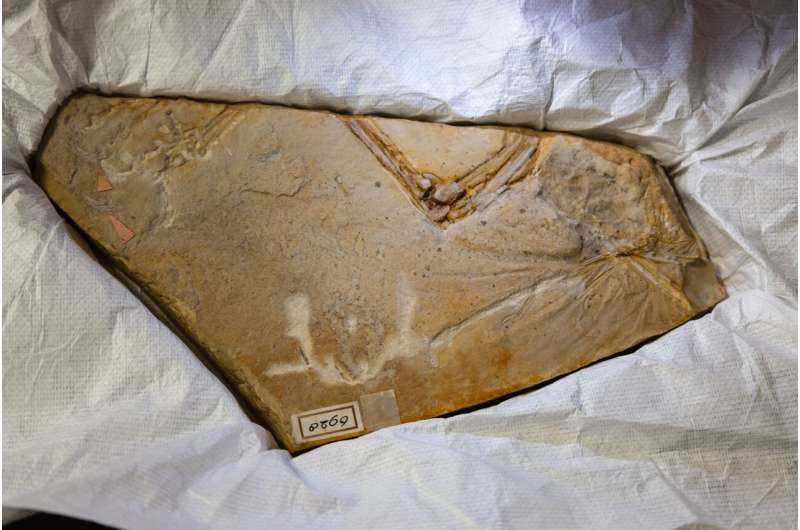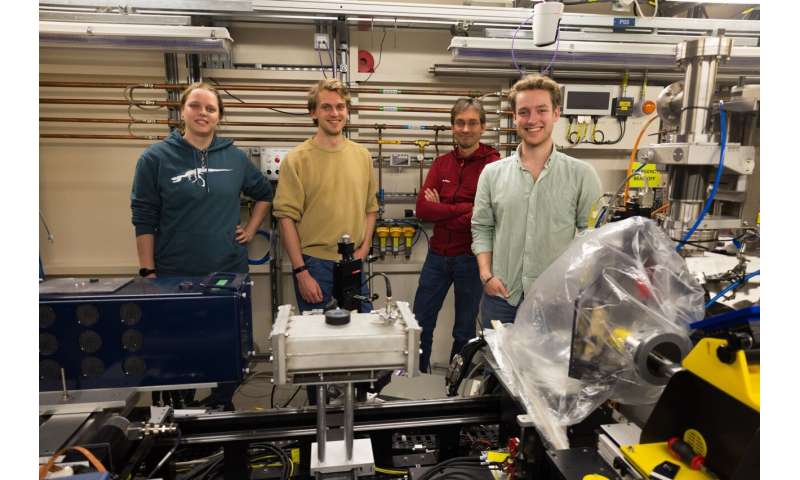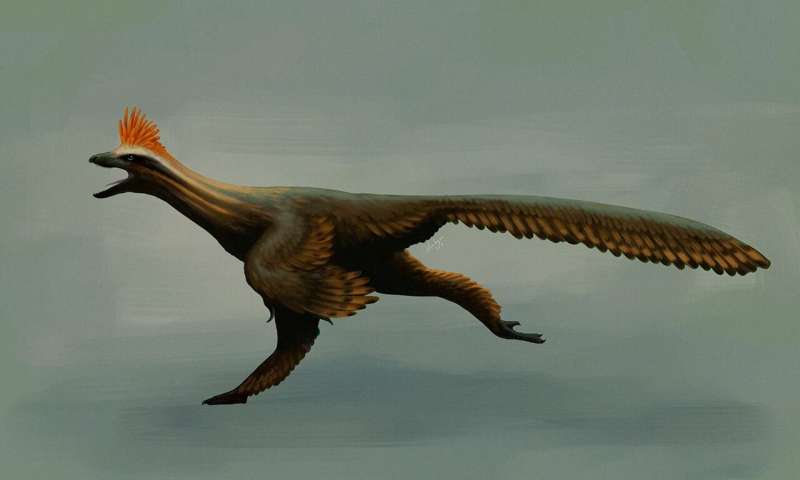This article has been reviewed according to Science X's editorial process and policies. Editors have highlighted the following attributes while ensuring the content's credibility:
fact-checked
trusted source
proofread
Is it a bird or a dinosaur? Fossils from Teylers Museum in Netherlands secretly visit UK's synchrotron

The feathered limbs, sharp teeth and claws of the oldest known bird-like dinosaurs, the Archaeopteryx have fascinated naturalists and paleontologists including Charles Lyell and Charles Darwin who propelled the species to fame especially following publication of his theory of evolution.
So, when a precious 150-million-year-old Ostromia crassipes fossil—formerly known as a specimen of Archaeopteryx—arrived at Diamond Light Source in a high security operation, it naturally caused a great deal of excitement.
The rare fossil, which is usually housed at the renowned Teylers Museum in the Netherlands, was brought to Diamond so scientists could discover more about its features, including the color of its feathers. The specimen was studied on the I18 beamline, using a microfocus X-ray available at the U.K.'s leading science facility.
The Archaeopteryx is called the "first true bird" and is about the same size as a magpie at around 20 inches from head to tail. This "Ostromia" fossil shows the knee region, part of the wing, claws, ribs, lower stomach bones, and feather imprints. These were examined at Diamond in more detail than ever before. This is the first time this specific fossil has been studied in such a way.
Collection manager, Tim de Zeeuw, described it as the Mona Lisa of the museum's fossil collection. He explained that the Jurassic fossil was discovered at Jachenhausen, a village in southeastern Germany in 1855. The fossil was secretly brought to the U.K. by a special transport team and was kept under lock and key around the clock, even while on the beamline at Diamond.
-

Research Team from the University of Utrecht and Teylers Museum at Diamond's microfocus spectroscopy beamline I18. Lead author, Edgar Mulder, a master's student at the university on right of picture. Credit: Diamond Light Source -

Ostromia reconstruction, previously known as the Haarlem Archaeopteryx specimen. Credit: Mariolanzas CC BY-SA 4.0
The new research undertaken will be the subject of a forthcoming paper and is a collaboration between the University of Utrecht and Teylers Museum.
Lead author, Edgar Mulder, a master's student at the university explained that it was a bit of dream come true to get time to examine the fossil at Diamond and the team worked through the night to get as much information as possible.
When this fossil was discovered, it was thought to be a pterosaur until 1970 when it was identified as an Archaeopteryx. Professor Dr. Anne S. Schulp at the University of Utrecht, said, "In 2017, it was concluded that this sample was more closely related to the Chinese Anchiornis and given the name Ostromia.
"This new research at Diamond is helping to further determine its features. It is particularly important as the Archaeopteryx and other 'early birds' play a key role in the origin of birds."
Mulder adds, "This is really exciting work as the Ostromia has the claws and teeth of a dinosaur but the feathers of a bird, which places this species 'in between' dinosaurs and birds. We hope the results will reveal the pattern in the feathers and identification of the melanin could suggest the color of the feathers.
"Similarly, if the feathers and claws have been preserved and keratin is within the sheath on the bony claw, this will show that like humans, it had a terminal phalange, which grows on top a specialized nail made from keratin."
Analysis was conducted using a combination of X-ray fluorescence imaging and absorption spectroscopy at Diamond's microfocus spectroscopy beamline I18. Principal Beamline Scientist on I18, Konstantin Ignatyev added, "This beamline has a super bright energy-tuneable X-ray microbeam that can be focused down to 2 micron, that can scan the widest range of elements on the periodic table.
"This allows the study elemental and chemical composition of various samples at very high spatial resolution. In this case, it allowed us to look in detail at the chemical environment of sulfur at different locations on the fossil as well as pinpoint the distribution and concentration of other elements from phosphor to zinc.
"Looking at the sulfur chemistry in this sample, for example, might reveal chemical signals of degradation products of soft tissues like tissues, feathers, skin, keratin, etc. This will reveal more detail about this fossil than what has been possible to see before."
Provided by Diamond Light Source





















